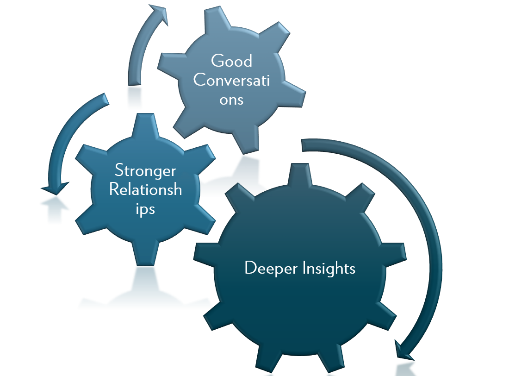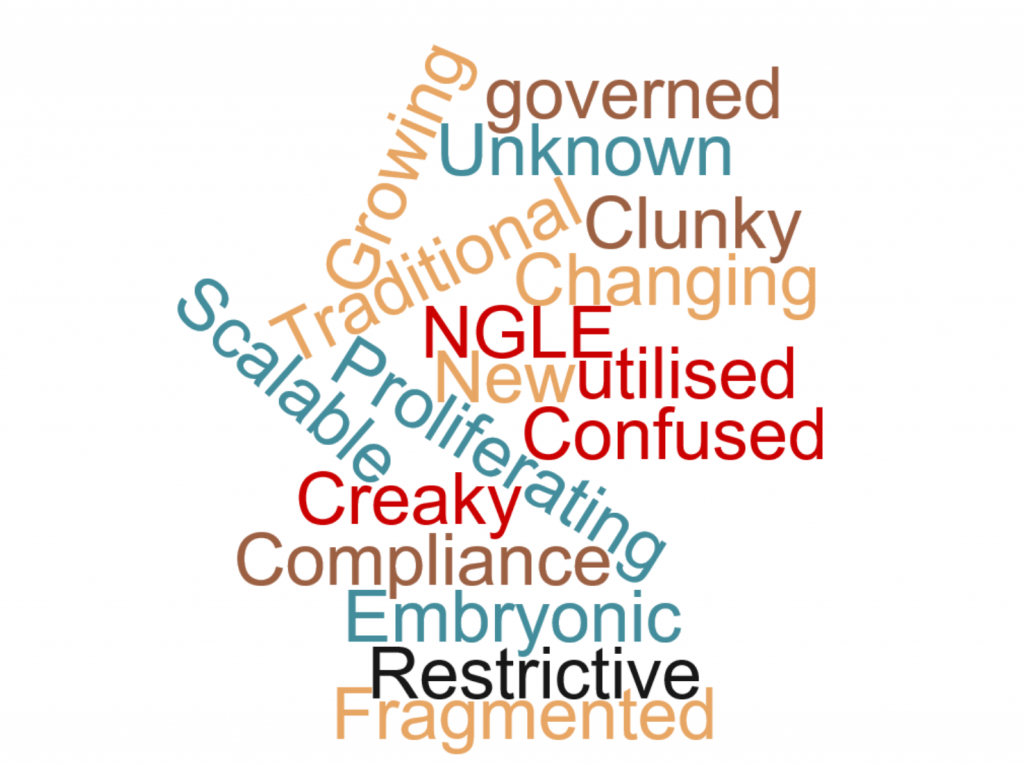Article
Fosway Learning Symposium 2018: Reflections and Round-up
Digital is certainly the watchword of the day in 2018. But what does it really mean for L&D? This year’s annual Fosway Learning Symposium brought together heads of learning from FTSE 100 and other global organisations to explore the most pressing challenges facing L&D today.
 In case you’re not familiar with the model of Fosway’s roundtables, these are a very different kind of event. It isn’t about our analysts standing on stage presenting. It’s about collaboration and sharing insights. We operate under Chatham House rules which gives attendees real freedom to divulge what they’re doing and how they’re doing it – often in very frank terms! It’s no holds barred but for the purposes of these reflections, names have been changed to protect the innocent and talk in general terms about the findings from the day.
In case you’re not familiar with the model of Fosway’s roundtables, these are a very different kind of event. It isn’t about our analysts standing on stage presenting. It’s about collaboration and sharing insights. We operate under Chatham House rules which gives attendees real freedom to divulge what they’re doing and how they’re doing it – often in very frank terms! It’s no holds barred but for the purposes of these reflections, names have been changed to protect the innocent and talk in general terms about the findings from the day.
The digital transformation of learning
Based on discussions with corporate organisations and Fosway’s ongoing research, our analysts selected six key topics for the day:
- Making L&D a truly digital function
- Delivering compelling learner experiences
- AI, VR and AR: Innovations that transform learning or overhyped toys?
- Next Gen Learning Environment (NGLE)?
- Reinventing content for the digital age
- Rethinking your learning systems strategy and architecture
A key theme across all of these topics is that context is key. What constitutes digital transformation or innovation in one organisation does not necessarily translate across different contexts and industries. There is also a growing level of complexity to learning strategy and operations. We have more content types and technology options than ever before – which is good news – but this also brings with it the challenge of making all the fragmented pieces fit together in a way that feels seamless and sensible to our learners.
Systems
Nowhere is that challenge more keenly felt than when we discussed learning systems architecture. The word cloud below is taken from the session notes and illustrates a landscape littered with legacy issues in organisations who are trying to move forward and work out what being digital means to them. The LMS has been tarred with a fairly negative brush over the years, but it seems that the new crop of Next Gen Learning Environments (NGLEs) are not necessarily the saviours that some in L&D hoped they would be.

The way NGLEs cater for a mobile first strategy with personalisation, social learning and user generated content features baked into their DNA are certainly appealing, and we have seen a big rise in adoption that was reflected in the attendees’ organisations. But they are not designed to cope with some of the training management and compliance and reporting tasks that the LMS was designed for. Many organisations are finding themselves either trying to use both, making integration a key feature for buyers now. Having the ability to create a coherent ecosystem of learning platforms that provides a good user experience for learners was important to most attendees. And it was encouraging to hear the number of people talking about piloting systems before committing to a solution that ultimately might not work for them. Small scale adoption of new specialist platforms is happening more and more, which hopefully leads to more robust buying decisions and better outcomes for both corporate organisations and the vendors.
Content
The range and duration of learning content has shifted fairly dramatically in recent years. Our attendees are moving away from pure play e-learning (and in many cases, away from traditional suppliers too) in favour of a more blended approach that embraces video, apps, user generated content, social and curation. Many have also moved from a ‘just in case’ to a ‘just in time’ or point of need approach, trying to embed more learning into the flow of work. Creating these journeys across the full learning cycle is a work in progress in a lot of instances, but the desire is very much in evidence.
However, easy access and finding the right content at the right time is an ongoing challenge. The ability to search and filter as content catalogues expand is crucial. Gamification and badging was perhaps less popular than anticipated with the feeling that these kinds of ‘gimmicks’ don’t generate real engagement with content. A more important focus is on establishing a culture of learning that a) doesn’t automatically mean training and b) shifts L&D away from reacting to business demands for content to address certain needs. There is a very real ambition to become more proactive in determining where learning needs should be met across the business and how best to meet them. This clearly isn’t an overnight shift however.
Innovation
And the theme of culture looms large over the topic of innovation. Clearly, in order to evolve and keep up with digital demands from the rest of the business, L&D has to innovate. Which means different things in different contexts. Engineering for example stood out for being more traditional whereas airline and retail organisations are blazing something of a trail for everybody else. And there is no doubt that cool tools and technology are not a sticking plaster and are not applicable for every context. It can get tiresome listening to the hype surrounding innovations like Virtual Reality (VR), Augmented Reality (AR) and Artificial Intelligence (AI) without any use cases to back it up. So, it was fascinating to hear about real world examples of 360-degree video, Google Cardboard headsets and chatbots. Google Cardboard is being piloted in an onboarding programme to immerse new starters into the company’s brand before they even walk through the doors on their first day, (using their own mobile phones). The use case is clear and simple without the high investment costs often associated with VR.
The supplier market is still niche for many of these more innovative solutions. This can make the procurement process tricky for enterprise organisations more used to partnering with large scale providers. Ultimately, being innovative comes down to the strength of the business case (one VR project had high overheads but the alternative of people learning the skills they need in real life carry high safety risks – so suddenly the potential risks and costs make sense to the senior stakeholders). But it also needs to happen in an environment where it’s OK if something fails or L&D need to iterate. This culture simply doesn’t exist in many organisations. Plus, managing innovation in a staged way that enables L&D to pilot and prove its concept before rolling out more widely is still not the prevalent model for most. With attendees whipping out their mobile phones to compare VR content and AI in action, it does seem that things are moving in a more innovative direction.
Below are some of the Fosway team’s immediate reflections on the day’s discussions.
Our roundtables are hosted annually and can also be tailored for individual organisations to work through current and future challenges. You can find more information here or contact us for further details.
[related_posts_by_tax taxonomies=”category,post_tag”]

